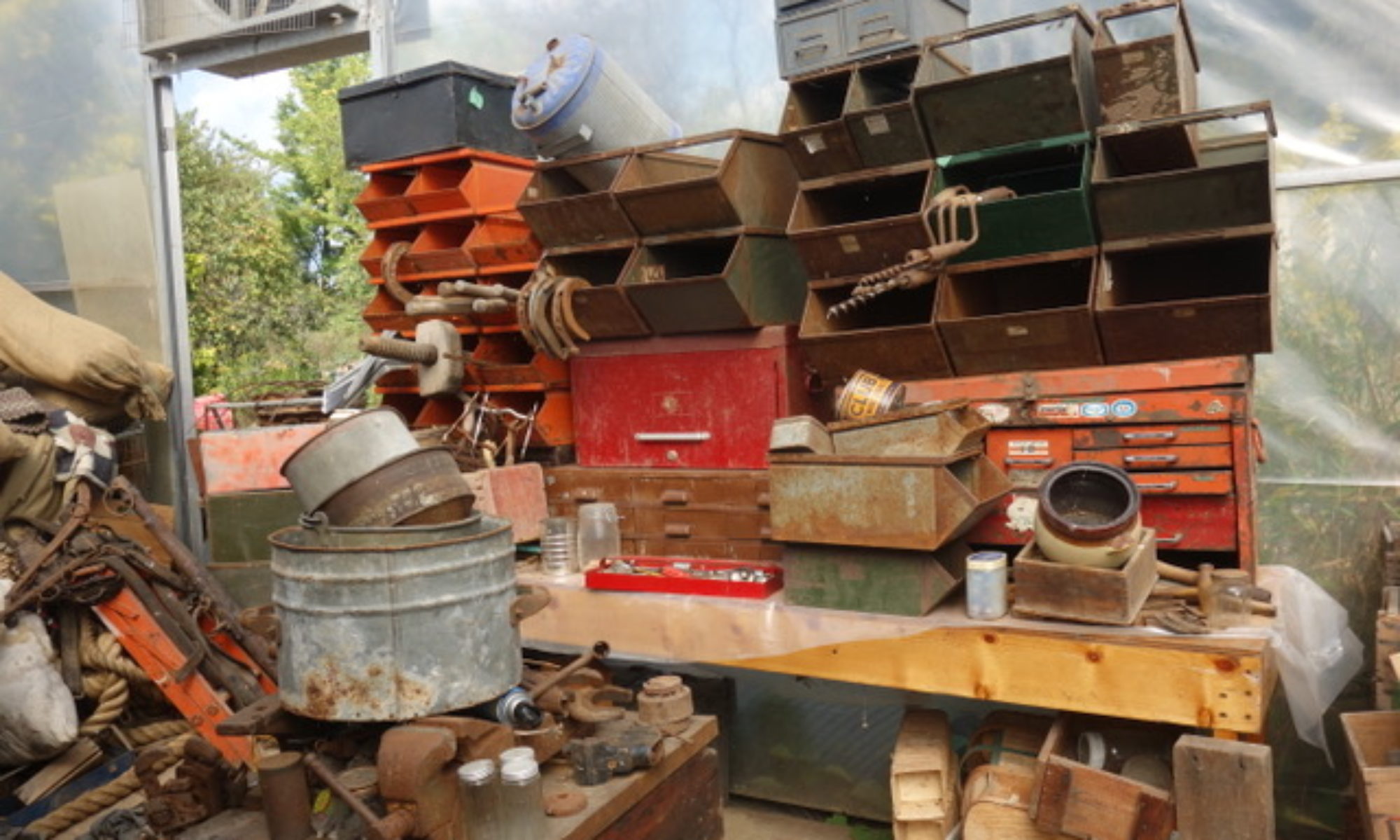EPISODE 272 THE MASSEY FERGUSON BULL WHEEL…symbol of working class history…gone
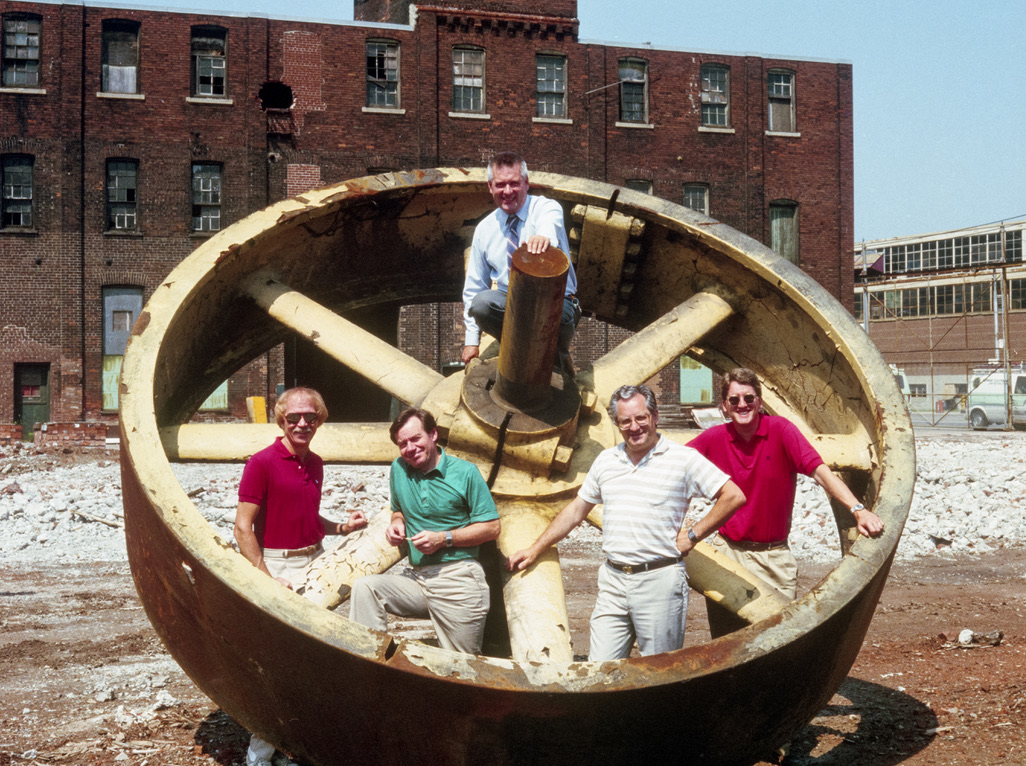
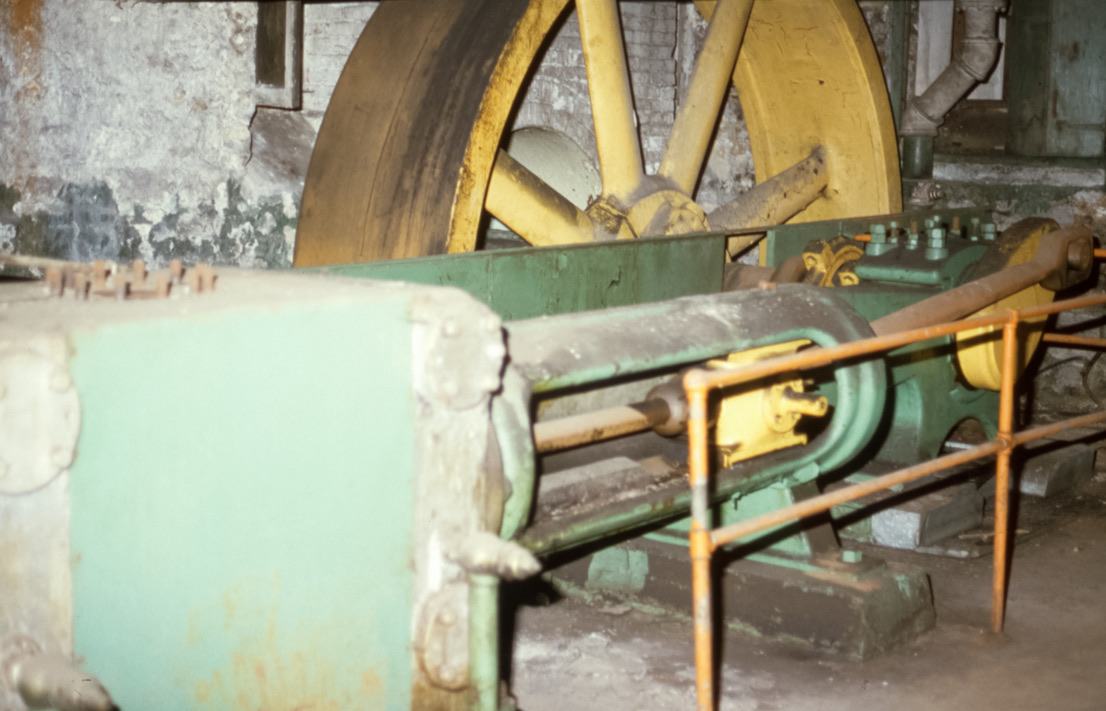
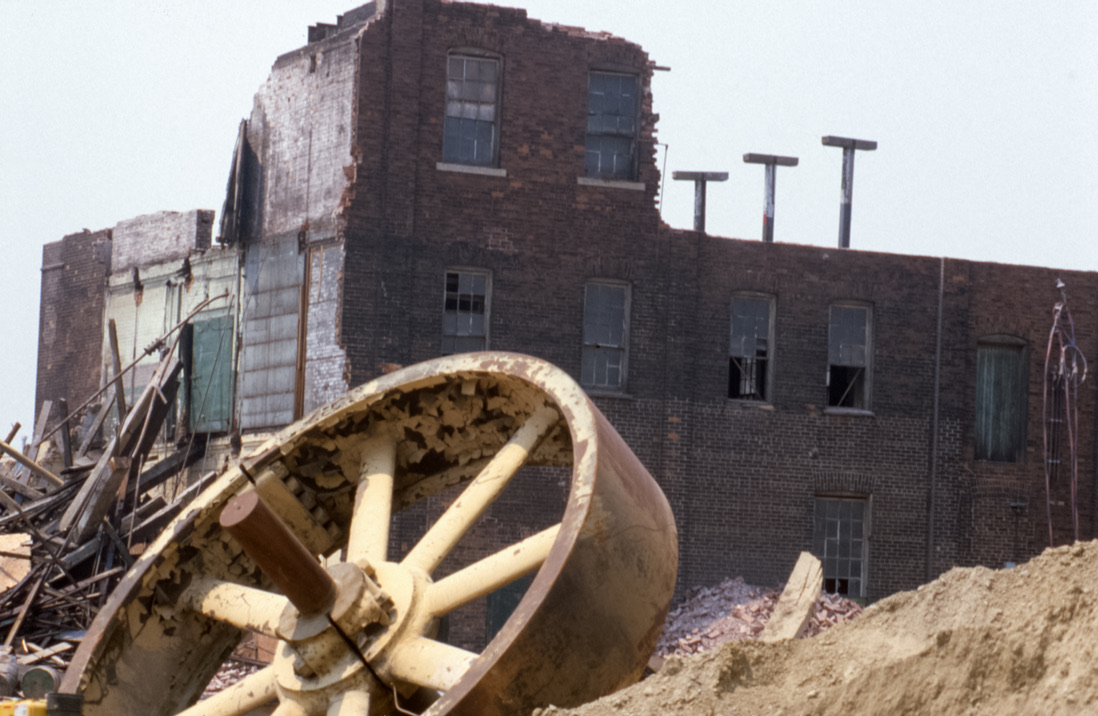
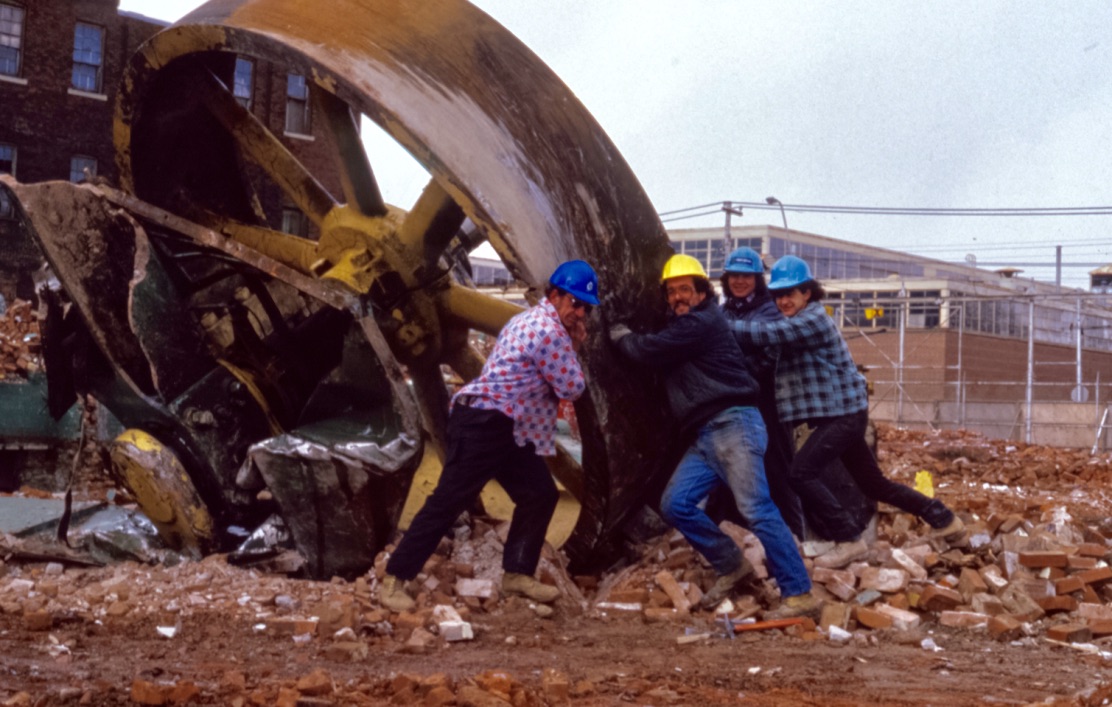

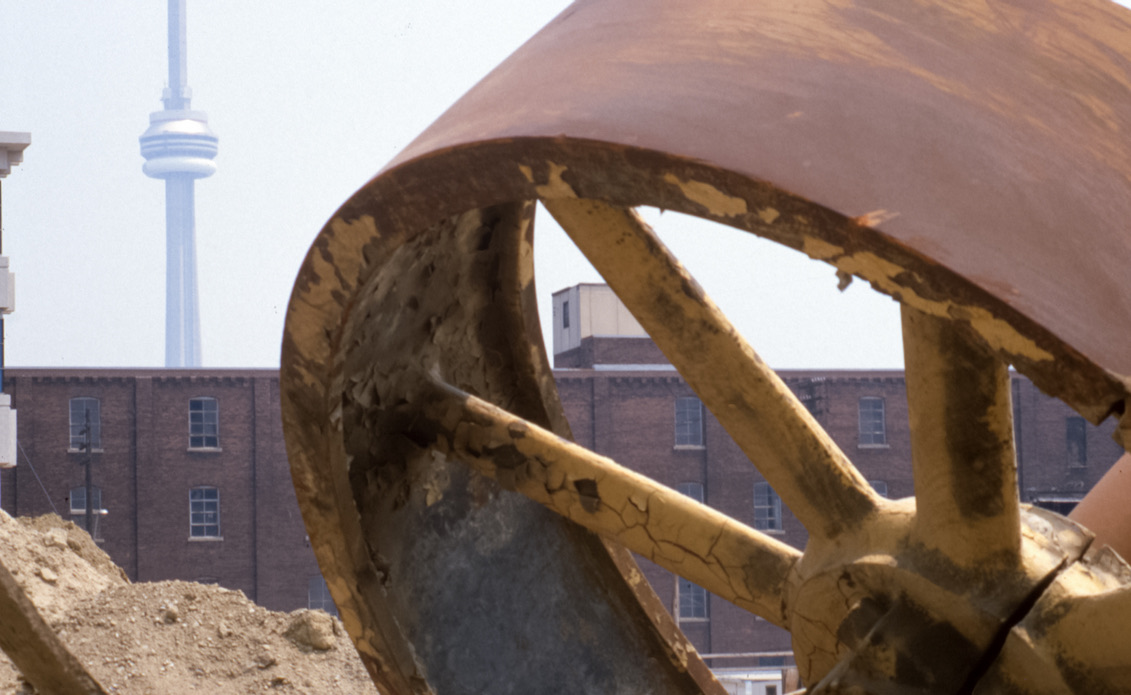
alan skeoch
March 2021

Our history department at Parkdale Collegiate Institute in 1980. Left to right…Lynn Roddick, Phil Sharp, Sam Markou, John Maize,
up top Alan Skeoch. Terry Wickstrom was rescuing a few boards, missed the picture. The glory days of teaching when history as a subject had a firm place in the curriculum. 1980, A time when
we nearly saved something important. A symbol of our past. We failed but had a glorious time trying to make this wheel into a
monument.
THE STORY OF THE BULL WHEEL, 1980
In 1980 the wrecking machines began to be unloaded at the Massey Ferguson
factory on King Street West in Toronto. This was once the site of the biggest
employer in Toronto. Makers of farm machines sent around the world…horse drawn
harrows, binders, dump rakes, wagons, hay forks. The Massey Harris days witnessed
the changes in farm technology of 19th century Canada eventually resulting in Massey Harris
tractors which at one point dominated the tractor business.
About the same time that the demolition began I wrote a 300 page thesis on agricultural
machine technology from 1850 to 1891. A massive job. I am not sure that my professors
at the U. of T. actually read the tome. I worked in three departments at the university…three
professors….Donald Webster in Fine Arts, J.M.S. Careless in History, and Bruce Sinclair in Engineering. I did not
care if it was read or not. It was a matter of the heart. For decades I had observed the steady
decline of family farms across Ontario. Farm sales were so common that there could be a
dozen sales to choose from on any given Saturday…weekdays too. Ontario was changing.
Something was being lost and unrecorded.
So when the excavators, drag lines, bull dozers began pushing down the Massey buildings…so many of them
were in place…I was a witness. More than that. I was a collector. Every morning from 6 a.m. to 8 a.m. I was
on the demolition site. So often that it was assumed I was part of the crew…hard hat and steel toed boots.
I loaded my truck with all I could push or carry. The Portuguese foreman and his
crew even helped with the cast iron carts of which I managed to load a number. On one occasion I remember
our principal came out to the parking lock to see the timbers jutting five to ten feet out the back of my truck
while I was washing the soot of a century before going to class.
There will be a number of stories coming about this odyssey. Odyssey? yes, an odyssey on a sea of broken bricks.

The deeper the demolition the more that was found until the gem of gems was uncovered. The giant bull
wheel that ran the line shafts that were belt wrapped to the lathes, heavy punch presses, shapers, iron workers
that made all those bright red and Yellow Massey Harris…then Massey Ferguson farm machines.
The bull wheel! The heart of the factory. Huge. Cast iron and steel. So big that a special machines had
to be delivered on a flat bed truck just to pull the wheel from the machine shop to an open space.
“What will happen to this wheel?”
“Who knows? Need a big wrecking ball to smash it into pieces.”
“I would like to save the wheel.”
“What?”
“It is a wonderful symbol of 19th century manufacturing. It could be an enduring monument
to working class history. Could be set up on a bit of parkland.”
“It is yours if you want it. But better be fast.”

As it happened Kris Korwin Kuchinski was our City Councillor for Parkdale…a district in west Toronto where
I taught history. Kris was
One of my former students. I taught both of the Kuchinski boys. Mark and Kris. We even have a large
maple tree that they gave me years ago. Tree is now 60 feet high. Nice kids.
“Kris, do you think we could persuade the City to save the Massey bull wheel?”
“Bull Wheel?”
“Come over to the school, we’ll go down to the demolition site and I’ll show you.”
Kris thought the idea was great. As did others in positions of power. The wheels began
to turn. The bull wheel was going to be saved. Even David Miller, future mayor of Toronto was on side. It would of course cost a bit of money to do so.
But it would happen.
I was elated.
Just for fun, I asked my whole Parkdale Collegiate history department to come
down to the site and pose on the wheel. Now a cherished photo in our house.
Then I asked the Portuguese workmen and the foreman to simulate that they
were moving the wheel.


In short, I was overjoyed.
One day, a bunch of white helmeted men arrived and nosed around while I was loading
American pitch pine floor planks. They paid special attention to the bull wheel. No
attention to me. They paid too much attention to the bull wheel as it turned out.
The next day, at 6 a.m. the bull wheel was smashed to bits by a big steel ball
swinging from a crane.
Why? I have no idea. I suspect the power people had heard my plan. It would
cost them money…perhaps cost a parcel of land. The site was planned for condominiums
High profits. Dense population.
“Smash the bastard wheel to bits. Some damn fool wants to save it
as a monument. Get it the hell out of here before the city puts a stop
work order in place.” That is what I think happened.

Here is the last picture of the bull wheel with the CN tower as proof that the bull wheel was once apart of our city.
